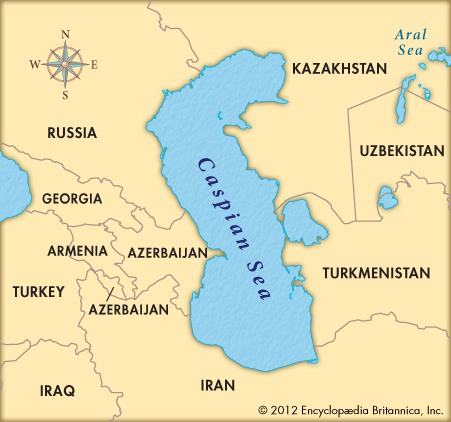Environmental activists have raised concerns over the rapidly declining water levels in the Caspian Sea. The sea has experienced its water area shrink by 7.1% over the past 15 years. From 2005 to 2023, the Caspian Sea’s water level dropped by 185 centimeters, resulting in a loss of 31,000 sq km of water area. The shrinking sea is a result of climate change, excessive water use, and pollution, highlighting the need for urgent intervention.
About the Caspian Sea
- It is the world’s largest inland body of water, often referred to as the largest lake and also classified as a sea
- Bordering Countries: It is bordered by five countries – Kazakhstan, Azerbaijan, Russia, Turkmenistan, and Iran.
- Kazakhstan has the longest coastline along the Caspian Sea.
- Geographical Spread: It is spread across 370,000 sq km and is fed by some 130 rivers
- Geographical Variations:
- Northern region: Less salty, shallow (average depth 5 meters).
- Southern region: Saltier, deeper (reaching up to 1,025 meters).
- Oil reserves: Estimated at 48 billion barrels. It holds major geopolitical significance due to its vast oil and natural gas reserves, making it critical for global energy security

Reasons for Declining Water Levels
- Climate Crisis: Rising temperatures contribute to increased evaporation rates.
- Excessive Water Use: Agricultural irrigation is diverting water sources, reducing inflow.
- Pollution:
- Nuclear waste disposal impacts water quality.
- Industrial and urban pollution further degrade the ecosystem.
Environmental and Economic Impact
Ecological Consequences:
- Loss of marine biodiversity and habitat destruction.
- Desertification of coastal areas, leading to altered ecosystems.
Economic Hardships:
- Fishing industry at risk due to declining fish stocks.
- Agriculture faces water shortages, affecting food security.
- Tourism decline, impacting local economies.
